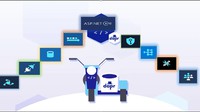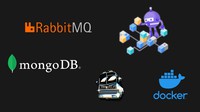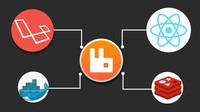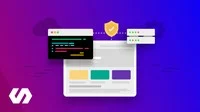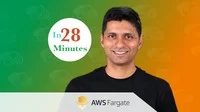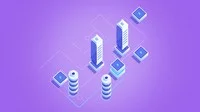
In this article you can find online Microservices courses to become a master.
Microservices – also known as the microservice architecture – is an architectural style that structures an application as a collection of services that are
- Highly maintainable and testable
- Loosely coupled
- Independently deployable
- Organized around business capabilities
- Owned by a small team
The microservice architecture enables the rapid, frequent and reliable delivery of large, complex applications. It also enables an organization to evolve its technology stack.
The microservice architecture is not a silver bullet. It has several drawbacks. Moreover, when using this architecture there are numerous issues that you must address.
The microservice architecture pattern language is a collection of patterns for applying the microservice architecture. It has two goals:
- The pattern language enables you to decide whether microservices are a good fit for your application.
- The pattern language enables you to use the microservice architecture successfully.
With our following 10 online courses, you’ll be able to become a Microservices master.
Microservices Development Revolution with .Net5 and Dapr
F. Frank Ozz via Udemy
This course starts explaining what separates a microservices architecture and a monolithic architecture. It sets out to teach you what led the Microsoft company to come up with the Dapr (Distributed Application Runtime) technology. It teaches you the components of the Dapr technology and what those components are useful for. It teaches you how to install and/or update Dapr library globally on your local machine. It teaches you the Dapr relation with Docker. It teaches you what Service Invocation Block (Service Discovery Block) is used for and what methods Dapr makes available to put that block into action in your projects and much more.
★★★★★(5-star rating)
Building Microservices with .NET – The Basics
Julio Casal via Udemy
Is your team suffering the symptoms of the monolithic hell? Are you wondering if a microservices architecture is the right fit for your .NET project? Have you been asked to implement microservices and you don’t know where to start? Are you just curious about this trendy new term? In this course you will learn why you may want to embrace a microservices architecture and how to get started by using the .NET platform. You will learn the foundational elements of microservices by incrementally building a real microservices based application with .NET 5, step by step. The first two microservices of this application are built in this course, each storing their data in a Docker hosted MongoDB database and both communicating asynchronously via a RabbitMQ message broker and MassTransit.
★★★★★(5-star rating)
React and Laravel: Breaking a Monolith to Microservices
Antonio Papa via Udemy
Learn how to create a Monolith using React and Laravel then Learn how to move from that app to Microservices. In this tutorial you will learn: Create a SPA with React, Next.js and Laravel, Authenticate using Laravel Passport,Create Event–Driven Microservices with RabbitMQ,Use Docker for each Microservice,Internal APIs,Use Redis and Stripe,Use Redux,Restrict routes for unauthorized users,Upload PHP packages to packagist.If these are what you are looking for then this course is for you.
★★★★★(5-star rating)
Microservices with Kubernetes: Building Microservice Systems
Microservice Zone via Udemy
Welcome to this course: Microservices with Kubernetes – Building Microservice Systems. Microservices help design scalable, easy–to–maintain web applications. They are the next big thing in designing scalable, easy–to–maintain applications, making app development easier and providing great flexibility in utilizing various resources optimally. Kubernetes is an open source orchestration platform to manage containers in a cluster environment. With Kubernetes, you can configure and deploy containerized applications easily.
★★★★★(5-star rating)
Kubernetes Hands-On – Deploy Microservices to the AWS Cloud
Richard Chesterwood via Udemy
Kubernetes is one of the hottest topics right now, and engineers with Kubernetes skills are in big demand. Get those skills with this course! It’s is a great chance to work on a real Kubernetes project, and to get yourself to a high professional standard on real projects. All the way through the course you’ll be working on realistic requirements – but you don’t need to be a coder or know any particular programming language – I’ve prepared for you a set of Docker images, and your job is to use Kubernetes to get these images running.
★★★★★(5-star rating)
Microservices with Spring: Building Distributed Systems
Spring Zone via Udemy
Welcome to this course: Microservices with Spring Course – Build Distributed Systems. In this course, you’ll learn how to easily build and implement scalable microservices with spring. Microservices are the next big thing in designing scalable, easy–to–maintain applications, making app development easier and providing great flexibility in utilizing various resources optimally. A microservice architecture helps you build your application as a suite of different services. This approach has been widely adopted as it helps to easily scale up your application with reduced dependencies. The Spring Framework is an application framework and inversion of the control container for the Java platform. This course will help you implement the microservice architecture in Spring Framework, Spring Boot, and Spring Cloud.
★★★★★(5-star rating)
Microservices with Node JS and React
Stephen Grider via Udemy
Microservices are the number one solution for building and scaling out apps that are intended to grow. Just one little issue: there are few resources online that delve into the most complex and nasty issues around them! I built this course to fix that. This course tackles every major issues around microservices head on. From challenges with data replication to confusing unordered event streams, every major challenge of building microservices is covered. Beyond focusing on the basics of microservices, this course is a perfect introduction to the world of full–stack development. You will work all the way from the frontend, assembling a React app using Hooks, to the backend, including database design and deployment strategies. Every step along the way is covered in tremendous detail, with ample diagrams to ensure every step is crystal clear.
★★★★★(5-star rating)
Reactive Microservices with Spring WebFlux
Vinoth Selvaraj via Udemy
Spring WebFlux is a reactive non–blocking web stack which provides better performance compared to traditional Spring Web MVC! Check out the performance comparison as part of the FREE preview to learn more! We build 3 Microservices from scratch & Integrate in this course (Checkout first lecture as part of preview for more details)!By the end of this course you would be comfortable with:Spring WebFlux,Exposing Reactive Restful APIs ( all the GET / POST / PUT / DELETE ),Controller annotation,Exception Handling with @ControllerAdvice @ExceptionHandler,Query Params with WebFlux.
★★★★★(5-star rating)
Master AWS Fargate & ECS with Java Spring Boot Microservices
in28Minutes Official via Udemy
AWS ECS and AWS Fargate make it amazingly easy to orchestrate your Docker containerized applications. How about learning AWS ECS and AWS Fargate deploying Docker based Java, Spring Boot Microservices? Do you have ZERO experience with Amazon Web Services (AWS) or ECS or AWS Fargate? No Problem. Learn AWS Fundamentals? Yes. Deploy Microservices to AWS? Yes. Learn ECS and AWS Fargate? Yes. Of Course. Hands–on? Of course. Do you want to learn to deploy Spring Boot Docker Containers to Amazon Web Services using Elastic Container Service – ECS and AWS Fargate with an easy to learn, step by step approach?
★★★★★(5-star rating)
Lumen Microservices: Create Services and APIs with Lumen
JuanD MeGon via Udemy
During this course, I will show you the whole process to implement a service–oriented architecture with PHP and using Lumen; implementing a set of microservices and its interactions. Build the entire security and interaction systems between each microservice. All of that using PHP with Lumen. At this end of this course you will be able to implement any microservices architecture you need using PHP and Lumen. You will have a clear idea of how to implement each microservice with Lumen, as well as how the interaction between each of these microservices should be structured, how to build a complete security layer that protects and restricts access to each microservice in the architecture using OAuth2 with Lumen/Laravel Passport along with authenticate users and use different grant types of OAuth2.
★★★★★(5-star rating)

